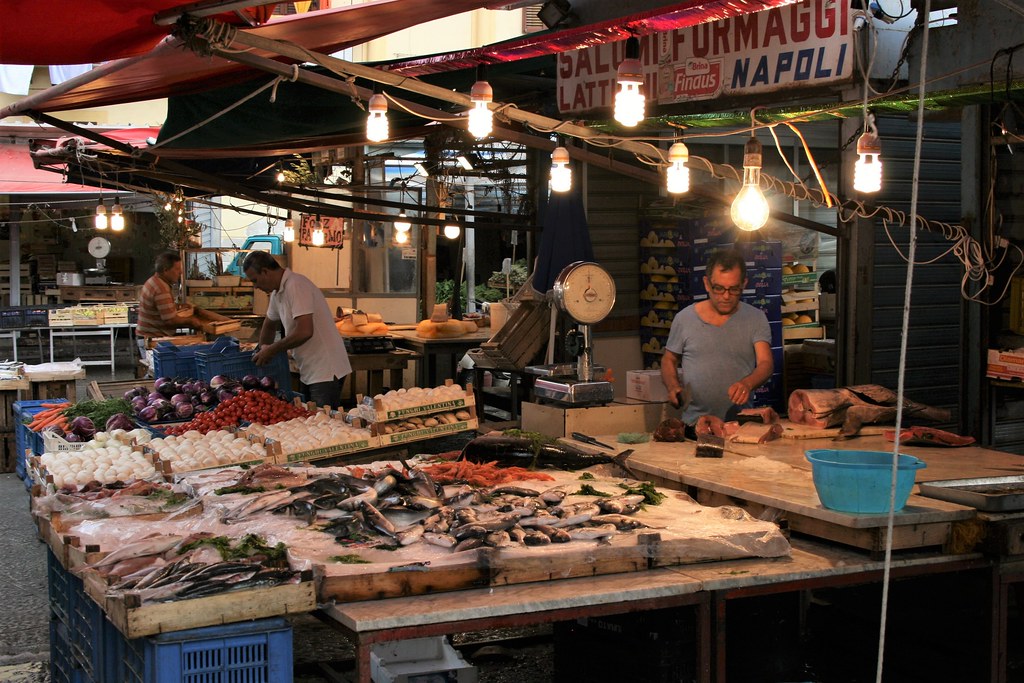The markets of Palermo between history and current events
GRAND TOUR BLOG | 12 July 2019

The markets of Palermo between history and current events

The market of Palermo is a historic market: it is still a total social fact, according to an expression dear to the French Sociology, and in particular Marcel Mauss, where the mutual relations among men that are established through the exchange not only invest the economics in the strict sense, but religious, ludici and aggregation in various forms. A place of exchange not only of goods or goods but of knowledge and experience, a place of interaction and communication as a foundational element of any culture (Buttitta, 2006:15-16).

The markets of Palermo are the ideal place for a real blast from the past and in the most ancient traditions of the people of Palermo. You get there, alongside abandoned neighborhoods, buildings in ruins full of more and more silent memories, entering areas marked by dilapidated doors (once important signs of defense of the city), symbolic boundaries between past and present, history and existence, or along streets and alleys, where to take the lead in an intense smell of the sea.
The four most important markets and historic Palermo are: Vucciria, the boss, The Old Village, and finally the very old Ballarò, in the heart of the city.
the Vucciria
It is a pleasant mixture of voices, smells and noises; a corner of the city where time seems to stand still. And 'the oldest market and popular Palermo extends in and around Piazza Caracciolo, It began as a workshop of the flesh, once closed by open arcades completely today in which the goods (meat, fish, fruit) It is exposed in typical stalls on special marble slabs calls “BALATE“. It was once called the great Bucciria, This term comes from a French word, boucherie which means butcher, because in Angevin times there was a slaughterhouse, while today there abound carnezzerie.

The boss
It is a known market of Palermo, popular neighborhood, It was formed under the Muslims, over the course of Papireto, and it was inhabited by Schiavoni, pirates slave traders. It stretches along the Via Carini and Beati Paoli, the route of S. Augustine and the way Cappuccinelle. It was the Augustinian populate this area, since they had their seat in the convent adjacent to the fourteenth-century church of S. Agostino. One of the main entrances is the Porta Carini, near which is the Palace of Justice. A narrow alley widens and narrows the stalls that are projected from the outside in which they themselves are born putii, people makes it impractical because they stop to observe, agree, feel and buy.

Ballaro
It stretches from the square to the Professed House of course Tukory bastions towards Porta Sant'Agata. Ballarò is the oldest market of Palermo, attended by hundreds of people of all races, animated by the so-called abbanniate ie the rowdy sellers lures, with their distinctive local accent and complexion, They are trying to attract the attention of passers. It is also open all afternoon, It is visited by those who are returning home, so that there are sellers of baked goods, typical of the cuisine of Palermo, ready to take home, as boiled or baked onions, panelle, cazzilli (potato croquettes), lesse greenery, , octupus out of the quarume (Veal entrails).
It is a traditional and populous district,currently multicultural. Several written accounts state that already in the tenth century there was a large market in southern rabad, di'Ibn Siqlab between the mosque and the New District, right in the area where today is to Ballaro. The name comes from the Arabic, since in that era, in India, there was a prince named Balhara and in this market we are talking also flowed into various wares and spices hailing from 'India. So she started calling Ballaro. It is a market used to sell fruit, vegetables, vegetables, meat and fish, but also you include household items for the kitchen and house cleaning. With the same features of the Cape and Vucciria markets, Ballaro is chosen for large market part by Palermo for shopping. Unlike other markets it is the least transited by tourists.
Old village
Palermo is one of the most active and busy cities of Sicily, and it offers many recreational opportunities in the night dream scenarios, exotic and oriental. One of the most popular meeting places is the market area of Old Village, which is located between Piazza Sturzo and Piazza Ucciardone. This market is the only one that stays open late, attracting a lot of young people who meet here to organize the evening.

In these spaces strongly marked by tradition they are mounted and discontinued ephemeral architectural scaffolding: curtains and umbrellas brightly colored stripes, Flying stalls and marble counters lit by hanging lamps and devotional image protection, photographs of their dead, decorated with candles and flowers, which stands at the center of the breadwinner, founder of the business. Among the goods so-called "pizzini", Price labels with simulated in order to attract the customer, with the illusion of a saving which is then only apparent: 0,999 cents instead of a euro.
Finally tiles complete the essential kit market: it is ocher-yellow sheets of paper or old newspapers rolled cone, arranged coffe (sports, the road) Wicker and ready to receive the goods. The walls stand the insignia of the workshop with the carrier name, painted on wood with vibrant hues, usually depicting the groceries for sale but also the production contexts mostly sailors or devotional image for the protection of.



